 W
WLazar Arsenijević Batalaka was a Serbian participant in the First Serbian Uprising and later a state adviser, diplomatic representative of Serbian to Constantinople, Minister of Justice and Minister of Education and a historian.
 W
WIlija Birčanin was a Serbian knez (Prince) who was killed during the Slaughter of the Dukes, the incident that sparked the First Serbian Uprising of the Serbian Revolution, ultimately leading to Serbia's liberation from the Ottoman Empire.
 W
WVasilije "Vasa" Čarapić, known as the Dragon from Avala and Vasso Tscharapitsch was a Serbian voivode that participated in the First Serbian Uprising of the Serbian Revolution against the Ottoman Empire.
 W
WAntonije "Anta" Simeonović, better known as Čolak-Anta was a Serbian fighter and military commander (Vojvoda), one of the most important figures of the First Serbian Uprising of 1804-1813, a spontaneous armed rebellion that became a war of liberation from the Ottoman Empire, the Serbian Revolution ultimately became a symbol of the nation-building process in the Balkans, provoking unrest among the Christians in both Greece and Bulgaria. He was a military commander, governor of the province of Kruševac, and later in life, Chief Magistrate. Čolak-Anta fought under Grand Leader Karađorđe, and is the eponymous founder of the notable Čolak-Antić family.
 W
WStojan Čupić was a Serbian revolutionary general (vojvoda), one of the most important commanders of the First Serbian Uprising. He was active in the Mačva region.
 W
WPetar Teodorović, known as Petar Dobrnjac was a Serbian Vojvoda in the First Serbian Uprising. He was born in the Požarevac nahija, in the village of Dobrinji, Petrovac. In his youth, he was a hajduk, and later a trader in farm animals.
 W
WStanoje Stamatović, known as Stanoje Glavaš was a Serbian hajduk and hero in the First Serbian Uprising.
 W
WProdan Gligorijević, known simply as Hadži-Prodan was a Serbian voivode in the First Serbian Uprising of the Serbian Revolution, then the Greek War of Independence, against the Ottoman Empire. He led an unsuccessful rebellion in 1814, dubbed Hadži Prodan's Revolt.
 W
WVule Ilić , known as Vule Ilić Kolarac, was a Serbian military commander (vojvoda) who fought the Ottomans during the First Serbian Uprising. Vule Ilić Kolarac fought alongside Hajduk Stanoje Glavaš then under Grand Leader Karađorđe distinguishing himself at the Battle of Suvodol and at the Siege of Belgrade. During the uprising he was commander of the city of Smederevo the temporary capital of Serbia during that time.
 W
WJanko Popović, nicknamed Cincar Janko (Цинцар-Јанко), was a Serbian vojvoda, one of the most prominent leaders of the First Serbian Uprising.
 W
WJovan Simić Bobovac was a Serbian politician, who began his career as knez during the Ottoman period, participated in the Serbian Revolution (1804–17), and served as the President of the Serbian Supreme Court. He was one of the closest collaborators of Prince Miloš Obrenović.
 W
WĐorđe Petrović, better known by the sobriquet Karađorđe, was a Serbian revolutionary who led the struggle for his country's independence from the Ottoman Empire during the First Serbian Uprising of 1804–1813.
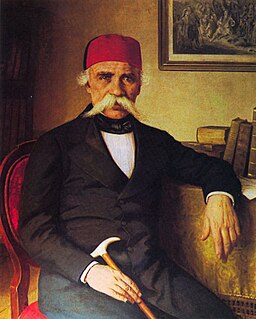 W
WVuk Stefanović Karadžić was a Serbian philologist and linguist. He was one of the most important reformers of the modern Serbian language. For his collection and preservation of Serbian folktales, Encyclopædia Britannica labelled him "the father of Serbian folk-literature scholarship." He was also the author of the first Serbian dictionary in the new reformed language. In addition, he translated the New Testament into the reformed form of the Serbian spelling and language.
 W
WJanko Katić was a Serbian voivode and one of the organizers of the First Serbian Uprising (1804–1813). He participated in the uprising since day one, and was an important oborknez of the Šabac district, and was one of the most courageous commanders, so influential as a military and political leader that he was held by many as the second only to Karađorđe Petrović, the leader, in Šumadija.
 W
WIvan Knežević also known as Ivo Semberac better known to the people as Knyaz Ivo of Semberija was a voivode and duke over all the villages of the then Bijeljina Nahiye.
 W
WNaum Krnar was the secretary of Karađorđe, the leader of the First Serbian Uprising. Krnar was an ethnic Greek, hailing from Thessaly. He spoke several languages and worked as a merchant in Belgrade. With the outbreak of the uprising, Krnar, who had enriched himself through the trade of leather and fur, immediately joined Karađorđe in the organization, and became his personal secretary and chairman in the Serbian Ruling Council. It is unknown whether he fled Serbia with Karađorđe after the suppression by the Ottomans in 1813. As many of the Serbian commanders, he found refuge in the Russian Empire. He was a founding member of the Filiki Eteria (1814). On 12 July 1817, on the Feast of Saints Peter and Paul, he and Karađorđe secretly crossed the Danube into Serbia, in order to continue the Serbian Revolution, however, the leader of the Second Serbian Uprising, Miloš Obrenović, learnt of this and had them both beheaded, their heads sent to the Sultan in Constantinople. Karađorđe and Krnar stayed in a cottage in the village of Radovanj in the Smederevo nahija. Nikola Novaković, a henchman of Vujica Vulićević, first killed the sleeping Karađorđe with an axe blow to the head, then shot Krnar, who was washing himself and getting water for Karađorđe in the river downwards from the cottage, with a rifle, on 13 July. Novaković beheaded both with his yatagan, and took them with him on horse to Kolare, and then to Belgrade, where he gave them to Miloš Obrenović. Obrenović in turn gave them to Marashli Ali Pasha who took them to Constantinople. The heads were on public display for seven days. They were then held at the Museum of Sciences in Istanbul. They say that Greeks later stole the heads, and took them to Athens to be held in a museum. The bodies of Karađorđe and Krnar were buried in a tomb in Radovanj by priest Jovan and Dragić Vojkić. The body of Karađorđe was transferred to Oplenac in 1919, while Krnar's body is still buried in the tomb.
 W
WJovan Petrović, known as Jovan Kursula, was a Serbian vojvoda (commander) that participated in the Serbian Revolution.
 W
WLuka Lazarević, known as Pop-Luka (Поп-Лука), was a Serbian Orthodox priest and vojvoda (commander) that participated in the First Serbian Uprising (1804–13) of the Serbian Revolution against the Ottoman Empire. Ordained as a priest at a relatively young age, Lazarević was described as a lively, gun-wearing horseman who joined the Serbian rebels in their fight against the renegade Janissaries (Dahije) to avenge his cousin. He quickly showed prowess and by the time the uprising against the Ottomans had begun he was chosen as the commander of a unit in western Serbia. Participating in all notable battles in that region, the Ottoman suppression forced him and other leaders to flee the country. He returned to Serbia in 1832 after many years in Russia, and worked for the Serbian government in his late years.
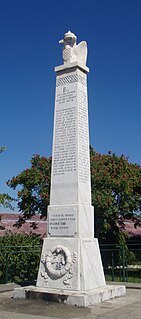 W
WArsenije Loma was a Serbian voivode in the First and Second Serbian Uprising of the Serbian Revolution (1804–1817). He was appointed by Karađorđe to command Kačer in 1811.
 W
WNikola Milićević, known by his demonym as Nikola Lunjevica (Луњевица), was a Serbian Revolutionary and close comrade of Prince Miloš Obrenović I of Serbia. He was born in Lunjevica, a village in the Sanjak of Smederevo, Ottoman Empire. He was relative of Princess Ljubica of Serbia, father of Serbian politician Panta Lunjevica (1840–1887) and grandfather of Draga, the Queen consort of Serbia (1900–1903).
 W
WSima Marković was a Serbian voivode who led his men in the First Serbian Uprising. He was one of four leaders of the Belgrade Nahiya along with Pavle Popović, Nikola Nikolajević, and Milisav Čamdžija.
 W
WMladen Milovanović was a Serbian merchant and a voivode in the First Serbian Uprising who served as the Prime Minister of Serbia and as a first Minister of Defence.
 W
WDjordje (Djuro) Milutinović was a blind guslar, at the time of the First Serbian Uprising. He was known as a trusted messenger of military plans and diplomatic secrets during the preparation and eve of the First Serbian Uprising.
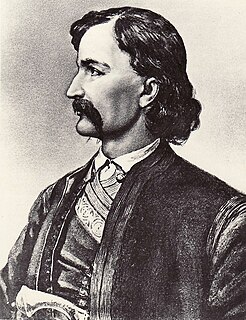 W
WPetar Nikolajević, known as Moler, was a Serbian revolutionary, participating in both the First and Second phases, serving as the Prime Minister from 1815 to 1816.
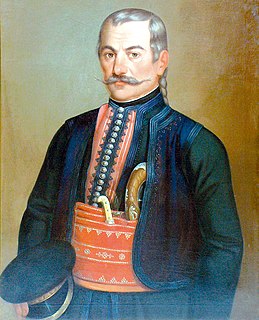 W
WAleksa Nenadović was ober knyaz of Tamnava—Posavina district of Valjevo nahiyah of the Belgrade Pashaluk.
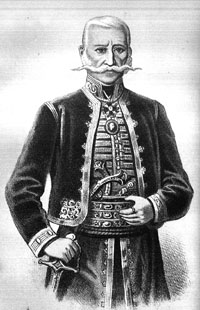 W
WJakov Nenadović was a Serbian voivode who served as the Prime Minister of Serbia and as a first Serbian interior minister. Nenadović was the most influential figure in Serbia at the time beside Karađorđe and Janko Katić.
 W
WMateja Nenadović, also known as Prota Mateja, was a Serbian archpriest, writer, and a notable leader of the First Serbian Uprising who served as the first Prime Minister of Serbia from 1805 to 1807.
 W
WSimeon "Sima" Nenadović was a Serbian voivode in the Second Serbian Uprising of the Serbian revolution. He was part of the Nenadović family, among which was his brother Prota Mateja, the first Serbian Prime Minister, his father Aleksa Nenadović (1749–1804), his nephew Ljubomir Nenadović, and his uncle Jakov Nenadović.
 W
WDimitrije "Dositej" Obradović was a Serbian writer, philosopher, dramatist, librettist, translator, linguist, traveler, polyglot and the first minister of education of Serbia. An influential protagonist of the Serbian national and cultural renaissance, he advocated Enlightenment and rationalist ideas while remaining a Serbian patriot and an adherent of the Serbian Orthodox Church. Founder of modern Serbian literature, he is commonly referred to by his mononym, first name alone. He became a monk in the Serbian Orthodox monastery of Hopovo, in the Syrmia region, and acquired the name Dositej (Dositheus). He translated many European classics, including Aesop's Fables, into Serbian.
 W
WMilan Obrenović was a general (vojvoda) during the Serbian Revolution. He was the half-brother of Prince Miloš I of Serbia.
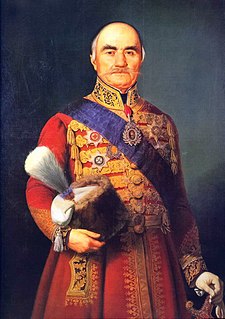 W
WPrince Miloš Obrenović I of Serbia born Miloš Teodorović, also known as Miloš the Great was the Prince of Serbia from 1815 to 1839, and again from 1858 to 1860. He participated in the First Serbian uprising, led Serbs in the Second Serbian uprising, and founded the House of Obrenović. Under his rule, Serbia became an autonomous principality within the Ottoman Empire. Prince Miloš ruled autocratically, consistently refusing to share power, which generated strong domestic opposition. During his rule, Miloš I bought a number of estates and ships from Ottoman Turks and also became a prominent trader. Although coming from humble beginnings, he eventually became the richest man in Serbia and one of the richest in the Balkans, with estates in Vienna, Serbia and Wallachia.
 W
WGiorgakis Olympios was a Greek armatolos and military commander during the Greek War of Independence against the Ottoman Empire. Noted for his activities with the Filiki Eteria in the Danubian Principalities, he is considered to be a leading figure of the Greek Revolution.
 W
WMilutin Petrović was one of the vojvodas of the Serbian Revolutionary forces in the First Serbian Uprising against the Ottoman Empire, in charge of the Negotin area. His nom de guerre was Era. He and his brother Hajduk Veljko were listed as one of the heroes of the Uprising.
 W
WVeljko Petrović, known simply as Hajduk Veljko, was one of the vojvodas of the Serbian Revolutionary forces in the First Serbian Uprising against the Ottoman Empire, in charge of the Negotin area. He was one of the biggest heroes of the Uprising.
 W
WPavle Popović was a warrior and diplomat, a participant in the First and Second Serbian Uprising, member of the Governing State Council of Serbia and member of the People's Office in Belgrade.
 W
WAtanasije Rajić, known by his nickname Tanasko (Танаско), was a Serbian vojvoda (commander) and revolutionary, the barjaktar (flag-bearer) in the First Serbian Uprising led by Karađorđe against the Ottoman Empire, and the captain in Obrenović's Second Serbian Uprising, during which he died (1815).
 W
WRaka Levajac was a Serbian Vojvoda, a military commander of Serbian Revolutionary forces during both First Serbian Uprising and Second Serbian Uprising, the armed insurrections of the Serbian population against the Ottoman Empire. Raka Levajac was remarkably close to both uprising leaders, Obrenović and Karadjordje, before falling out of grace with each of them. A celebrated leader at a time he died in poverty after losing status and fortune.
 W
WStevan Sinđelić was a Serbian revolutionary commander in Resava, who fought during the First Serbian Uprising (1804-1813) against Ottoman rule. As the commander of the Resava Brigade, he fought in many battles and skirmishes against Ottoman foot-soldiers, including the Battle of Ivankovac in 1805 and the Battle of Deligrad in 1806. He is remembered for his actions during the Battle of Čegar Hill in 1809, in which he and the Resava Brigade found themselves surrounded by the Ottomans. Encircled and without much chance of survival, Sinđelić ignited the gunpowder kegs in the powder cave, creating an enormous explosion that killed him, along with all of the Serbian and Ottoman soldiers in his trench.
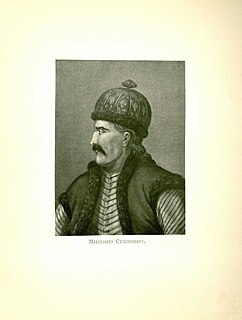 W
WMilenko Stojković was a Serbian revolutionary and bimbaša in the First Serbian Uprising early in the 19th century. He is most famous for executing four dahije tyrants during the start of the First Serbian Uprising, in vengeance for the "Slaughter of the Knezes".
 W
WVeljko Petrović, known simply as Hajduk Veljko, was one of the vojvodas of the Serbian Revolutionary forces in the First Serbian Uprising against the Ottoman Empire, in charge of the Negotin area. He was one of the biggest heroes of the Uprising.
 W
WMirko Apostolović, known as Uzun-Mirko was a Serbian voivode, with the rank of bimbaša during the Serbian revolution; he took part in both the First and Second Serbian Uprising. He was famed for his many fatal wounds, undetected infiltration into the Ottoman fort at Belgrade, among other operations, which gained him many awards. He is the founder of the Uzun-Mirković family.
 W
WJovan Gligorijević, known as Zeka Buljubaša, was a Serbian revolutionary captain (buljubaša) and nobleman active during the First Serbian Uprising.